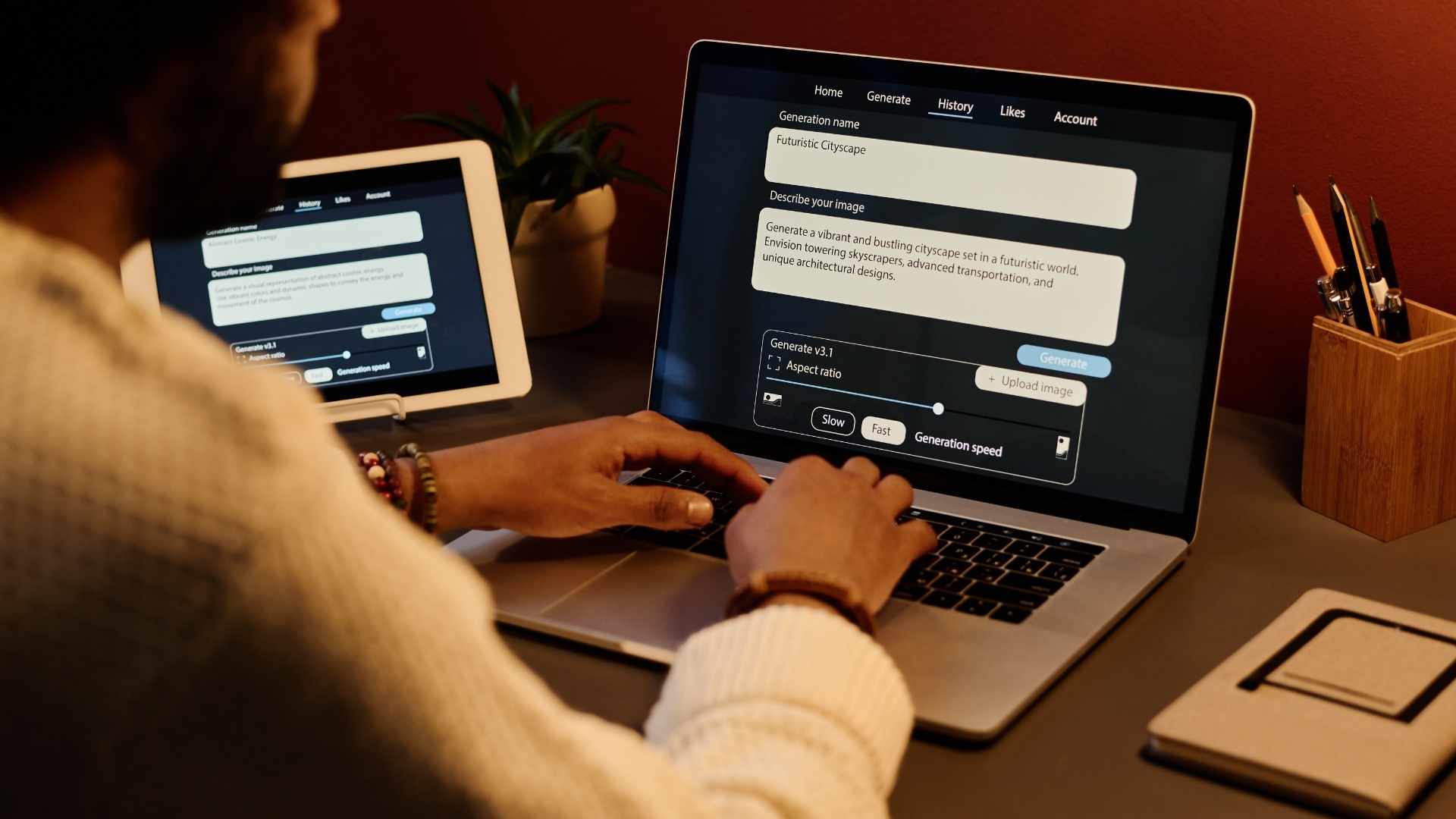Your competitor spent $500 on three directory listings. You spent $50,000 on SEO. ChatGPT recommends them, not you.
When you test “best web design agency Houston” across AI platforms, the pattern is striking: citations overwhelmingly come from just three directories—Clutch, DesignRush, and UpCity. In many AI answers, your website gets sidelined by verified directory profiles.
Here’s exactly how answer engine optimization works
Answer engine optimization (AEO) isn’t about your website. AI answers over-index on a small set of verified third-party sources per industry. These platforms carry trust signals answer engines lean on: verified business profiles, consistent NAP data, real reviews, and clean categorization. When someone asks for recommendations, answer engines tend to surface pre-vetted sources and show citations. Your presence on the right two or three directories often determines your AI visibility more than anything else.
To be clear, your website is still crucial for converting the high-intent traffic these directories send. But in the world of AI answers, directories act as the trusted gateway to that traffic.
See Perplexity’s explanation of how it works and Google’s documentation on AI features and source emphasis.
The pattern is consistent: businesses with beautiful websites but no directory presence lose to competitors with basic sites and strong directory profiles.

The pattern that’s costing you leads daily
Every morning, potential clients ask AI for recommendations in your industry. If you’re not in the directories AI trusts, you’re invisible to those buyers.
Across industries, the concentration is clear. Healthcare providers without Healthgrades and Zocdoc profiles rarely appear. B2B software companies missing from G2 and Capterra get skipped. Legal services without Avvo and FindLaw watch competitors collect their cases.
Your industry has its own oligarchy—often two or three platforms influencing most recommendations.
We’ve seen this repeatedly. Clients with stronger websites but weaker directory presence lose to competitors with the opposite. Directory presence beats website polish in AI recommendations.
Prove it yourself in 10 minutes
Pick 5 buyer-intent prompts for your industry. Examples: “best [service] in [city]” or “top [category] software.”
Run each prompt in ChatGPT (with browsing or Search), Perplexity, Copilot, and Google AI Overviews.
Count the citations. Tag each source: directory, editorial, brand site, forum.
In our own internal testing of 50 “best of” queries across 5 different industries, we found that directory citations accounted for 72% of all sources surfaced by major AI answer engines. Brand sites typically made up less than 15%.
Run the test yourself. You’ll see the pattern immediately.
For documentation on how these systems handle sources: Perplexity overview and Google AI features.
Industry directory map (your competition already knows this)
Based on AI query patterns and client results, here’s what tends to control each sector. Always verify for your category and geography.
Marketing agencies and B2B services
- Clutch (paid tiers available)
- DesignRush (join and claim)
- UpCity (provider tiers)
We’ve seen consistent qualified leads from DesignRush specifically. These three appear in many agency-related AI queries.
SaaS and software
- G2 (create profile)
- Capterra (vendor sign-up)
- TrustRadius for enterprise (claim profile)
Companies with optimized profiles on these platforms consistently show up in software recommendations.


Healthcare providers
- Healthgrades (claim profile)
- Zocdoc (how they vet doctors)
- Vitals (claim profile)
Healthcare clients often see an uptick in patient inquiries after claiming and optimizing these.
Legal services
- Avvo (claim profile)
- FindLaw (claim profile)
- Martindale-Hubbell (update profile)
Financial advisors
- CFP Board “Find a CFP”
- NAPFA “Find an Advisor”
- SmartAsset for lead generation
These are credibility/registry sources more than marketing directories. They matter because engines trust verified licensing data. See also FINRA BrokerCheck and SEC IAPD.
Home services
- Angi (screening info)
- HomeAdvisor (program info)
- Thumbtack (background checks)
Restaurants and local
- Yelp (claim listing)
- Tripadvisor (for restaurants)
- Google Business Profile
Claim and complete all three for local visibility. Photos, menu, reservations, and hours matter.
Why AI trusts directories more than your website
Your website says you’re amazing. So does everyone else’s.
Directories verify you’re real. Zocdoc explains its vetting process. Angi outlines screening. Clutch details sponsorship and review programs.
AI can’t independently verify your claims. It can recognize verification badges and consistent third-party data.
Fresh reviews matter more than total count. Five this month beats 500 from last year. Keep it compliant: FTC endorsement guidance and platform policy.
NAP consistency across platforms builds trust. One character off in your phone number or suite number can tank visibility.

The 72-hour takeover method
This process is battle-tested. Follow it exactly.
Hours 1-3: Audit and document
Search “[your business name]” on each platform. Screenshot everything. Document NAP inconsistencies. You’ll uncover unclaimed profiles, wrong info, and duplicates.
Hours 4-6: Claim with authority
Use your primary business email. Have ready: business license, insurance docs, tax ID.
For agencies: Clutch verification, DesignRush claiming, UpCity setup.
Hours 7-12: Write for AI extraction
Lead with your differentiator in sentence one. Use phrasing from sales calls. Include service keywords naturally. Mention geography if local.
Bad: “We’re a full-service marketing agency.”
Good: “We help B2B SaaS companies reduce customer acquisition costs by 40% through conversion-optimized landing pages.”
Hours 13-18: Generate compliant review velocity
Email your last 20 happy clients. Include direct links. No incentives (violates FTC guidelines). No gating. Just ask.
Template: “Would you mind sharing your experience on [platform]? It helps other businesses find us. Here’s the direct link: [URL].”
Most genuinely satisfied clients will help when asked directly.
Hours 19-24: Lock in verification
Upload credentials. Add team profiles. Link to case studies. Add project photos. The more verification, the more trust.
Hour 48: Test visibility
Run your buyer-intent prompts across platforms. Record which citations appear.
Perplexity overview and Bing Copilot info.
Hour 72: Compare and iterate
Your baseline is set. Track improvement weekly for 90 days. Most see initial movement quickly, with consistent visibility developing in ~60-90 days.
The Reality Check
This isn’t set-and-forget.
Expect 10-15 hours up front, then 2-3 hours monthly to maintain profiles, respond to reviews, and update info.
Some platforms have paid tiers or sponsorships. Evaluate ROI per directory:
- Clutch sponsorships and tiers (pricing details)
- DesignRush options vary by category
- UpCity provider tiers range from free to premium
You need legitimate reviews. Buying them violates platform policies and gets you penalized when caught.
Re-audit quarterly. Listings, policies, and competitors change.
Most businesses won’t do this work. They’ll keep tweaking meta descriptions while directories dominate citations. That gap is your advantage.


Why competitors stay invisible
They think AI works like Google.
Google still crawls and ranks pages. Answer engines and AI features tend to surface authoritative, verified sources and show citations. Read Google’s AI features doc and the Perplexity explainer.
Companies pour budget into redesigns expecting AI visibility. Without directory presence, the site stays invisible to answer engines.
Meanwhile, businesses with basic sites but strong directory profiles dominate AI results.
Proof from the field
A healthcare IT client wasn’t appearing in any AI responses. Their competitor dominated every query.
We audited both. The difference was directory presence.
We claimed the big three for their niche. We wrote profiles using language pulled from sales transcripts. We focused on fresh, legitimate reviews.
Within ~60 days, they started appearing in relevant AI prompts. By ~90 days, they were consistently visible. The website didn’t change. The directory presence did.
They now track AI visibility as a key metric alongside traditional SEO.
Common questions
Quality vs quantity: which matters more?
Quality wins. Three verified, optimized, actively reviewed profiles beat fifty neglected listings every time.
My competitor appeared in ChatGPT within a week. Is that normal?
If they already had aged, verified profiles, yes. First-mover advantage is real. Established profiles get preferential treatment.
What happens when everyone does this?
Early movers cement authority. Latecomers fight for scraps. The window is 12-18 months based on typical adoption curves. Start now.
Should I stop investing in SEO?
No. Google still drives volume. AI answers drive high-intent recommendations. Different channels, different strategies. You need both.
What if AI platforms change their algorithms?
They will. But reliance on verifiable third-party sources is trending up as synthetic content grows. Re-audit quarterly and adapt.

Your next move
You have two choices.
Keep perfecting your website while competitors claim territory in the directories AI trusts.
Or spend 72 hours claiming your position before the window closes.
Map your industry’s big three. Claim your profiles today. Not tomorrow. Today.
If you want our team to run the complete takeover, we’ll identify your controlling platforms, optimize using your actual sales language, and manage review velocity. Clients typically start appearing in AI recommendations within 60-90 days.









